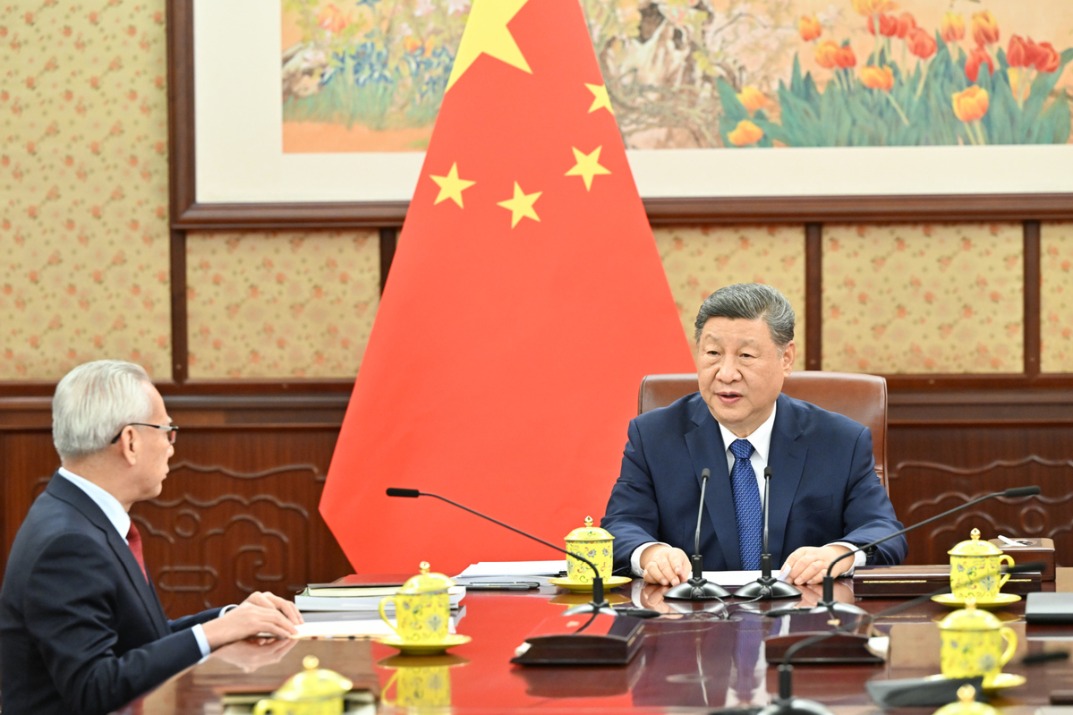Greater global cooperation urged on 6G
By MA SI | China Daily | Updated: 2022-03-24 07:34

Global cooperation on 6G research should be accelerated as the next few years are crucial for determining the direction of next-generation wireless technology, according to officials and experts.
While there is no universally accepted definition of 6G, the technology is expected to have far lower latency, higher speeds and more bandwidth than 5G.
The technology supports the integration of space, air, territorial and maritime communication technologies, and 6G is expected to be in commercial use around 2030, they said at the opening ceremony of the online Global 6G Conference on Wednesday.
Xiang Libin, deputy head of the Ministry of Science and Technology, said that the vision for 6G is still in its infancy and there is no consensus yet on key technologies.
However, this year is a critical time to take 6G from the realm of academic research to become an industrial vision.
"China's communications research community and telecom industry have been cooperating with their foreign counterparts for decades. We welcome and actively support international cooperation on 6G," Xiang said.
He suggested countries leverage their respective advantages, expand cooperation on key 6G research areas, and develop collaborative innovation to jointly build a "global 6G ecosystem".
With the guidance of the ministry, a 6G technology R&D promotion working group and an expert group were established in 2019.Both groups have started research and development into technologies including a 6G network and wireless transmission, Xiang said.
Yi Zhiling, chief scientist of the China Mobile Research Institute, said the next three to five years will provide a window to look at crucial 6G technologies and develop an industrial foundation.
In the past, Chinese companies have worked with international organizations to establish standards for 3G, 4G and 5G technologies. They should increase their partnerships and cooperation with their foreign counterparts "to promote the formation of globally unified 6G standards", Yi said.
Hong Wei, a professor at Southeast University's school of information science and engineering, said the most revolutionary aspect of 6G could be the integration of medium and low-orbit satellite networks with terrestrial 5G networks.
For the first time, 6G is expected to enable people to have full wireless network coverage over all of Earth's surface, near-Earth space and even parts of outer space, Hong said.
This will be the realization of "ubiquitous information interconnection", Hong added.
Experts said it is important to balance the use of 5G and research and development into 6G, as long-term strategies were needed to develop both technologies.
Wen Ku, secretary-general of the China Communications Standards Association, said advancing the use of 5G is like "building a good bridge and road" for 6G.
Without cultivating 5G technologies first, 6G might turn out like a child who tries to run before learning how to walk, Wen said.
There is still no consensus on how fast data transmission on 6G can be. Some scholars, such as Mahyar Shirvanimoghaddam, an expert in wireless technology at the University of Sydney, estimated earlier that 6G networks would allow users to get a maximum speed of 1 terabyte per second on an internet-enabled device.
The speed is 100 times faster than 10 gigabits per second, the hypothetical top speed of 5G.
























